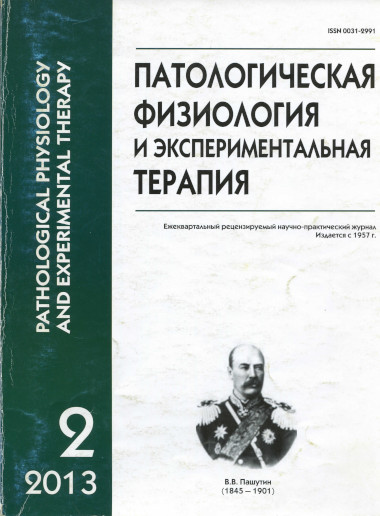Experimental evidence of magnesium salts for treatment of calcium oxalate nephrolithiasis in an animal model based on sodium oxalate and a cyclooxygenase 2 selective inhibitor
Abstract
The purpose of present study was to investigate influence of magnesium (Mg) salts (Mg L-aspartate, Mg chloride) and their combinations with pyridoxine on development of calcium-oxalate nephrolithiasis induced by sodium oxalate (3% diet weight) and celecoxib (100 mg per kg of bodyweight) according to B.C. Jeong et al. (Urol. Res. 2005; 33(6): 453—459). On 14th day of diet urinary oxalate level and crystalluria were significantly increased, creatinine clearance tended to be lower as compared to control group. Mg L-aspartate, Mg chloride and their combinations with pyridoxine, MagneB6 (Mg lactate in combination with pyridoxine) and Mg sulfate were given by intragastric intubation from 15th till 28th days of diet (50 mg Mg per kg body weight). On 28th day urinary oxalate level in rats treated with Mg salts was lower by in average 45%, creatinine clearance was increased by 19%, Ca/Mg ratio decreased by 1,5—2 times in comparison with animals fed with diet alone. Light microscopic examination of kidney sections have revealed decreased inclusion volume fraction of renal calcification in rats treated with Mg salts as to compare with untreated rats receiving sodium oxalate and celecoxib (0.3—1.0% vs. 4%). So, Mg salts prevented development of calcium-oxalate nephrolithiasis in hyperoxaluric rats. Morphological and laboratory tests showed Mg aspartate and magne B6 were more effective Mg-containing substances in comparison with other studied salts.






